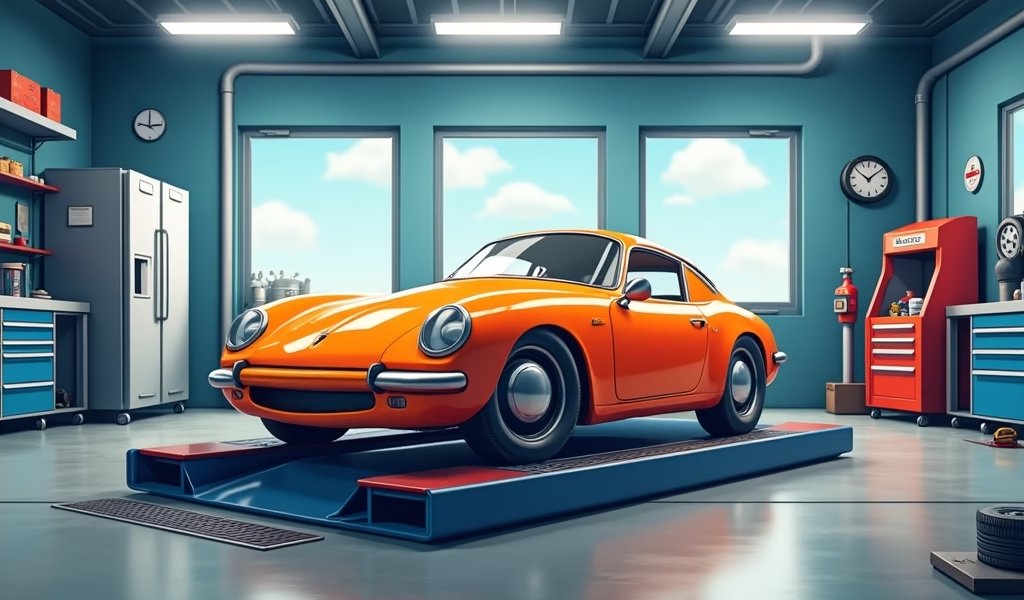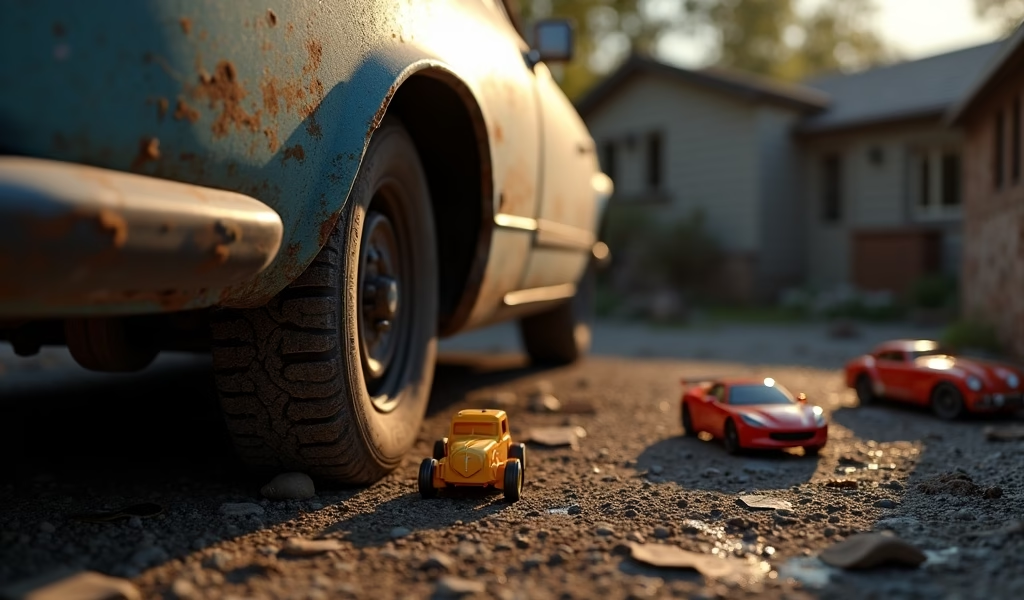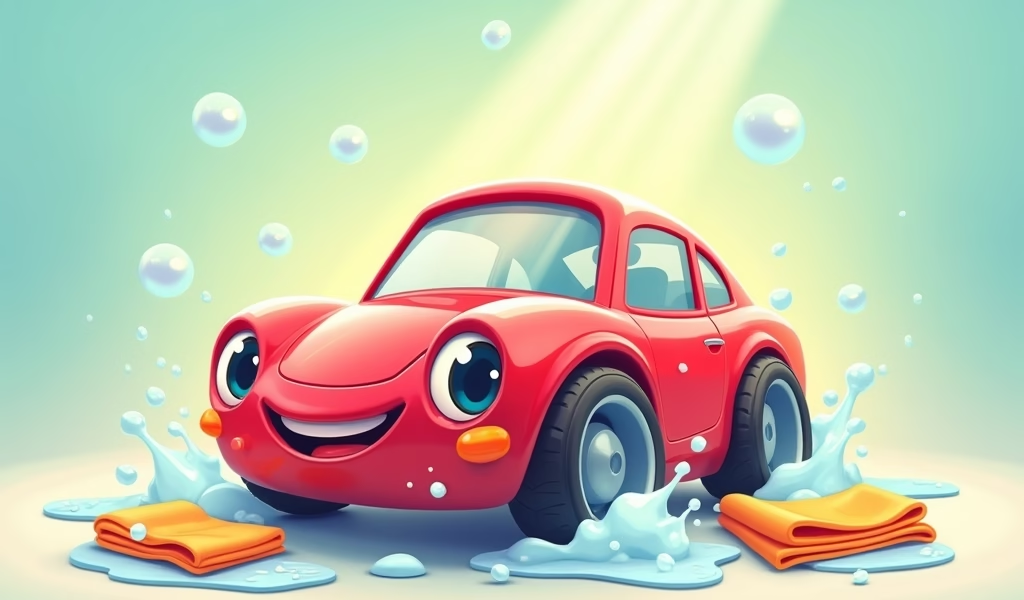Overview
This article provides seven practical hacks for optimizing in-car movie experiences for children during road trips, including creating entertainment organizers, managing cords, reducing screen glare, and maintaining electronic equipment. The guide combines technical advice from an experienced vehicle technician with age-appropriate movie recommendations, emphasizing how proper setup protects both the vehicle’s systems and creates a more enjoyable family travel experience.
Table of Contents
- Introduction: Keeping Kids Entertained on the Road
- Setting Up the Perfect In-Car Movie Experience
- Hack #1: Create a Dedicated Entertainment Organizer
- Hack #2: Spill-Proof Solutions for Movie Snacks
- Hack #3: Proper Screen Maintenance for Crystal Clear Viewing
- Hack #4: Strategic Cord Management
- Hack #5: Window Shades for Glare Reduction
- Hack #6: Regular Electronic Maintenance Routine
- Hack #7: Emergency Entertainment Backup Kit
- Best Movie Recommendations by Age Group
- Conclusion
- Frequently Asked Questions
Introduction: Keeping Kids Entertained on the Road
Family road trips can test even the most patient parent’s resolve. Between the endless chorus of “Are we there yet?” and the inevitable backseat bickering, long drives can feel like marathons. That’s where kids car movies come to the rescue—transforming potentially chaotic journeys into peaceful adventures.
As a master technician with 15 years of experience working on family vehicles, I’ve seen firsthand how in-car entertainment systems have evolved from simple DVD players to sophisticated multimedia setups. But I’ve also witnessed how these systems can impact your vehicle’s electrical systems and interior condition when not properly maintained.
The relationship between entertainment and vehicle care is closer than most realize. A well-maintained car provides the reliable platform needed for those movie marathons, while proper entertainment setup preserves your vehicle’s interior and electrical system.
In this comprehensive guide, I’ll walk you through seven proven car care hacks that enhance your family’s movie-watching experience while protecting your vehicle’s systems and surfaces. These practical solutions come directly from my garage to yours—tested approaches that have saved countless family road trips.
Setting Up the Perfect In-Car Movie Experience
Creating an effective in-car entertainment system requires balancing convenience, durability, and electrical demands. As someone who’s diagnosed countless electrical issues in family vehicles, I can tell you that proper setup prevents headaches down the road.
First, let’s address display options. You have three primary choices:
- Factory-installed entertainment systems (most reliable but costly)
- Aftermarket headrest monitors (good middle-ground option)
- Tablet mounts that utilize existing devices (most economical)
When selecting a system, consider your vehicle’s electrical capacity. Most modern cars can handle additional entertainment loads without issue, but older vehicles might need an electrical system check first. The last thing you want is to blow a fuse mid-journey through Lightning McQueen’s big race.
Power management stands as the foundation of a reliable movie experience. I recommend installing a dedicated power inverter for devices that require AC power, rather than relying solely on USB ports that may not provide consistent charging during heavy use.
For families using tablets, consider a tablet with extended battery life specifically for travel purposes. This reduces the strain on your vehicle’s electrical system during long trips.

Hack #1: Create a Dedicated Entertainment Organizer
Vehicle interiors weren’t designed for the digital tornado that accompanies modern family travel. Loose tablets, tangled headphones, and misplaced charging cables quickly transform your car into a chaotic electronic wasteland—creating frustration and potential safety hazards.
I’ve seen too many damaged charging ports and cracked screens from devices tumbling during sharp turns or sudden stops. The solution is remarkably simple: create a dedicated entertainment organizer that keeps everything secure and accessible.
The most effective organizers include:
- Padded tablet sleeves that prevent screen damage
- Cable management pouches with individual compartments
- Headphone hooks to prevent tangling and breakage
- Secure attachment points that prevent sliding during driving
For DIY-inclined parents, converting a tool organizer works wonders. The rigid compartments designed for wrenches and screwdrivers perfectly accommodate modern entertainment accessories, with the added benefit of being more durable than purpose-sold products.
Professional tip: Apply felt or microfiber to the interior surfaces of any organizer. This simple addition prevents screen scratches and reduces the rattling noise from devices shifting during travel—something I recommend to every family that brings their vehicle to my shop.
Hack #2: Spill-Proof Solutions for Movie Snacks
Movies and snacks go together like engines and oil—one without the other just doesn’t work right. Unfortunately, the combination of bouncy roads, excited children, and sticky treats creates a recipe for interior disaster.
After cleaning countless crushed cheerios from seat crevices and tackling stubborn juice stains, I’ve developed a comprehensive approach to in-car snacking that protects your vehicle’s surfaces while keeping the kids happy.
Start by creating designated snack zones using silicone placement mats that catch crumbs and contain spills. These washable surfaces protect upholstery and carpeting from stains while clearly defining eating areas.
For drinks, invest in truly spill-proof containers—not just “resistant” ones. Look for options with positive locking mechanisms that require deliberate actions to open. The few extra seconds needed to access the drink prevents most accidental spills.
Some proven snack solutions include:
- Silicone cupcake liners in cup holders for small snacks
- Snack containers with swivel tops that allow access without opening completely
- Bento-style boxes with sealed compartments
- Cereal dispensers modified for car use (surprisingly effective!)
Remember to establish and enforce a “food stays in containers until it’s in your mouth” rule. This simple boundary prevents most food-related interior damage while teaching kids responsibility for the vehicle’s condition.
Hack #3: Proper Screen Maintenance for Crystal Clear Viewing
Nothing ruins the movie experience faster than trying to watch Cruz Ramirez train Lightning McQueen through a screen covered in fingerprints and mystery smudges. Yet I’ve seen too many expensive displays damaged by improper cleaning methods.
As someone who regularly repairs electronic systems, I can tell you that screen maintenance isn’t just about aesthetics—it directly impacts device longevity and performance. LCD and OLED screens require specific care to prevent permanent damage to their delicate surfaces.
Create a dedicated screen cleaning kit that includes:
- Electronics-specific microfiber cloths (never paper towels or tissues)
- Alcohol-free screen cleaner in a travel-size spray bottle
- Anti-static brushes for vents and speaker areas
- Compressed air canister for removing debris from ports and edges
Establish a “clean screen” routine before each trip. This not only ensures optimal viewing but prevents the accumulation of oils and debris that can permanently bond to screen surfaces over time.
For touchscreens specifically, apply a high-quality screen protector designed for frequent handling. These replaceable surfaces absorb the oils and abrasion from little fingers, protecting the actual screen beneath from premature wear.
Hack #4: Strategic Cord Management
The tangle of charging cables in a family vehicle can quickly resemble an automotive nervous system gone wrong. Beyond the frustration and time wasted untangling, poorly managed cords create genuine safety hazards—they can interfere with vehicle controls or become dangerous projectiles during sudden stops.
As someone who’s repaired countless damaged charging ports and frayed cables, I’ve developed a systematic approach to cord management that enhances safety while extending the life of your electronics.
Start with these fundamental principles:
- Route all cables away from airbag deployment zones
- Use color-coded cables for easy identification (red for tablet, blue for headphones)
- Install cable clips that secure wires to non-visible surfaces
- Implement cable shorteners to eliminate excess length
For power delivery, consider a centralized charging station mounted securely to the vehicle. This approach concentrates all power management in one location rather than stringing cables throughout the cabin. Many professional installers can integrate these systems with minimal visual impact.
Remember that excessive heat damages electronic cables faster than almost anything else. Avoid routing cables across dashboard surfaces that receive direct sunlight, as the interior temperatures can exceed the heat tolerance of most consumer-grade cables.

Hack #5: Window Shades for Glare Reduction
Screen glare is the invisible enemy of in-car entertainment. From my years of installing and troubleshooting vehicle electronics, I’ve learned that even the most expensive displays become virtually unwatchable when fighting against direct sunlight.
Proper window shading serves multiple crucial functions beyond just improving visibility. It protects your expensive entertainment equipment from UV damage, reduces interior heat buildup, and prevents premature fading and cracking of dashboard surfaces.
When selecting window shades, consider these factors:
- UV blocking percentage (aim for 95%+ for maximum protection)
- Heat rejection capabilities (critical for electronic component longevity)
- Secure attachment mechanisms that prevent movement during driving
- Compliance with local visibility laws (some jurisdictions restrict front side window coverings)
The most effective solution I recommend to clients is custom-fit magnetic shades that contour precisely to each window. Unlike generic options, these provide complete coverage without gaps that allow light penetration.
For families on a budget, static-cling sunshades provide a reasonable alternative. Apply a light mist of water to both the window and shade before installation to eliminate air bubbles and improve adhesion. This simple technique dramatically improves their effectiveness.
As an ASE-certified technician, I’ve seen the dramatic difference proper window treatment makes in preserving vehicle interiors. Consider it an investment that protects both your entertainment system and your vehicle’s resale value.
Hack #6: Regular Electronic Maintenance Routine
Vehicle environments are brutal on electronics. Temperature swings, constant vibration, and dust accumulation create conditions that can drastically shorten the lifespan of entertainment systems. A proactive maintenance approach prevents many common failures I see in my shop.
Implement this quarterly electronic maintenance routine:
- Inspect all power connections for corrosion or looseness
- Check and clean cooling vents on devices to prevent overheating
- Test all charging cables for functionality and physical damage
- Verify secure mounting of all displays and accessories
- Update software while connected to home Wi-Fi
Pay special attention to 12V accessory ports (formerly cigarette lighters). These frequently develop high-resistance connections that generate heat and provide inconsistent power. A quick cleaning with electrical contact cleaner can prevent device damage and potential electrical fires.
For families using older vehicles, consider having the charging system tested annually. Many entertainment system failures I diagnose ultimately trace back to vehicle electrical system issues, not device problems. A classic movie car might look cool, but its electrical system likely needs upgrades to support modern entertainment demands.
Remember that lithium batteries used in most portable devices degrade rapidly in extreme temperatures. Never leave tablets, phones or other battery-powered devices in a parked vehicle during summer or winter months—a practice that significantly reduces battery capacity over time.
Hack #7: Emergency Entertainment Backup Kit
In my years servicing family vehicles, I’ve heard countless stories of vacation meltdowns triggered by entertainment system failures. Technology occasionally fails us—typically at the least convenient moment possible.
Creating an emergency entertainment backup kit applies the same preventive thinking that keeps your vehicle reliable. Just as you wouldn’t travel without a spare tire, don’t rely on a single entertainment solution for long journeys.
An effective backup kit includes:
- Secondary viewing device with pre-downloaded content
- Spare headphones (preferably battery-operated)
- Additional charging cables and adapters
- Basic troubleshooting tools (small screwdrivers, flashlight)
- Non-electronic entertainment options (travel games, books)
The key technical element here is redundancy. If your primary system uses streaming, ensure your backup contains downloaded content. If your main approach requires vehicle power, include battery-operated alternatives.
For maximum protection, store this kit in a water-resistant container separate from your primary entertainment system. This separation ensures that whatever affects your main setup (water damage, impact damage, etc.) doesn’t compromise your backup options.
Professional tip: Include a small automotive multimeter in your kit. This $20 tool can quickly diagnose power issues at ports and connections—often the root cause of entertainment system failures. Even without technical knowledge, you can compare voltage readings to identify problematic outlets.
Best Movie Recommendations by Age Group
After setting up countless entertainment systems in family vehicles, I’ve gathered feedback on what content works best for different age groups. The right movie choices can make the difference between peaceful miles and backseat chaos.
For preschoolers (ages 2-4), select content with simple storylines and bright visuals:
- Shorter episodes rather than full-length features
- Music-focused content that encourages singing along
- Familiar characters from their existing favorite shows
- Nature documentaries with animal footage (surprisingly effective)
Elementary-aged children (5-9) engage well with:
- Animation classics with positive messages
- Adventure stories that maintain interest over longer periods
- Educational content disguised as entertainment
- Fantasy worlds that spark imagination
Tweens and teens (10+) appreciate:
- Action-adventure films with appropriate content
- Science fiction that stimulates thinking
- Comedy that appeals across generations
- Classic films that introduce them to cinema history
From a technical perspective, remember that video file size directly impacts device storage and battery life. For longer trips, consider standard definition content rather than memory-intensive 4K files—most in-car screens can’t display the higher resolution anyway, and the lower-resolution files use less battery power during playback.
Conclusion
Implementing these seven proven hacks for kids car movies creates the perfect intersection of entertainment and vehicle care. From organizing your electronic equipment to maintaining screens and protecting your car’s interior, these practical solutions help preserve both your sanity and your vehicle’s condition during family travels.
Remember that a thoughtful approach to in-car entertainment isn’t just about keeping the kids quiet—it’s about protecting your vehicle investment while creating positive family memories. The right setup prevents unnecessary wear and tear while enhancing the travel experience for everyone.
As someone who’s spent years diagnosing and repairing family vehicles, I can assure you that preventative measures always cost less than repairs. Taking the time to properly implement these entertainment solutions now will save you significant headaches and expenses down the road.
Happy travels, clear screens, and smooth roads to you and your movie-watching crew!
Frequently Asked Questions
How can I install a headrest monitor in my vehicle?
Most headrest monitors come with installation kits for DIY mounting. For factory-level integration, consult a professional installer who can properly route power cables and secure mounts according to safety standards.
Will using too many devices drain my car battery?
Modern vehicles can typically handle multiple devices while the engine is running without battery issues. To prevent drainage when parked, use portable power banks rather than the vehicle’s electrical system.
How do I prevent motion sickness when kids watch movies in the car?
Position screens at eye level to reduce visual conflict with the moving environment. Limit viewing sessions to 30-45 minutes followed by breaks looking out the window.
What’s the best way to download movies for offline viewing during road trips?
Most streaming services offer downloadable content through their official apps. Download content using home Wi-Fi before your trip, and check that downloads are complete before departing.
Are there legal restrictions for in-car entertainment systems?
Many jurisdictions prohibit front-seat visible screens while driving to prevent driver distraction. Rear-seat entertainment typically has no restrictions, but check local regulations before installation.

